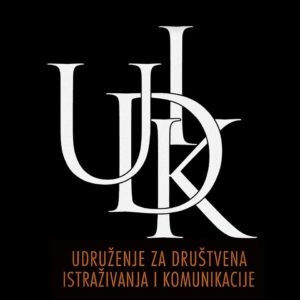 The International Day for Monuments and Sites (World Heritage Day) is held on 18 April each year around the world with different types of activities, including visits to monuments and heritage sites, conferences, round tables and newspaper articles. It was proposed by the International Council on Monuments and Sites (ICOMOS) and approved by the General Assembly of UNESCO.
The International Day for Monuments and Sites (World Heritage Day) is held on 18 April each year around the world with different types of activities, including visits to monuments and heritage sites, conferences, round tables and newspaper articles. It was proposed by the International Council on Monuments and Sites (ICOMOS) and approved by the General Assembly of UNESCO.
The Association for Social Research and Communication (UDIK) is the creator of the Central Register of Monuments (CES) which includes data on monuments devoted to the 1990s war in the territory of the former Yugoslavia. Within this database, there are over 3,500 monuments mapped in Bosnia and Herzegovina, Montenegro, Croatia and Serbia.
UDIK’s research has found that in Bosnia and Herzegovina, but also in the region, there are a large number of controversial monuments that cause intolerance and conflict in the community. These monuments directly or indirectly represent a different interpretation of history than the official one in the former SFR Yugoslavia. Sometimes it is not about erecting a new monument, but simply about remodeling an existing one. Sometimes these monuments are dedicated to the victims of the Yugoslav wars, but they simply provoke controversy in society with their appearance, place or message.
On the occasion of the International Day of Monuments, UDIK presents the publication „Monuments and politics of memory in Serbia and Montenegro, controversies“. Through this publication, we have tried to provide answers to all that is happening in the post-socialist societies of the Western Balkans. In practice, this means forgetting a common history, looking for space for one that aims at separation. That is why we should not be surprised by the rehabilitation of Chetniks in Serbia or the erection of a monument to the murderer of Stjepan Radić in Montenegro. It is a history that aims to embody heroisms that are actually crimes.
In the analysis of the monumental culture in Serbia, the Belgrade sociologist Marijana Stojičić states: “Monuments and memorials are part of a complex mosaic that offers landmarks in the social world. They speak of the socio-political framework in which they arise and as such are inevitably exposed to various social influences. As a rule, they are an expression of political (national) memory, the most influential form of collective memory whose function is to build national identity.”
That is why we continue to believe that it is important to work on a regional level. This is the only way to dismantle a policy that aims to create a false history.
 UDIK Udruženje za društvena istraživanja i komunikacije
UDIK Udruženje za društvena istraživanja i komunikacije

